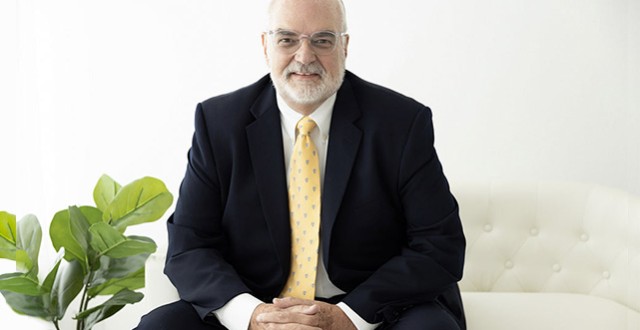
- Mediation
- Arbitration
- Court Neutrals
- Online Dispute Resolution
- Technology
- Court Decisions
- More
- Legislation
- Healthcare
- Guest Posts
- John DeGroote
- John C. Fleming
- Rick Freeman
- Professor Peter Friedman
- Honorable W. Royal Furgeson, Jr.
- James M. Gaitis
- Laura A. Kaster
- Professor John Lande
- Philip J. Loree, Jr.
- Michael McIlwrath
- F. Peter Phillips
- Professor Alan Scott Rau
- Professor Thomas J. Stipanowich
- Professor S.I. Strong
- Richard Webb
- Glen M. Wilkerson
- International arbitration
- Regulation
- Sports and Entertainment
- We’re Back!!!!Well, it’s been a while since we published and that is about to change. Since I spent much of last year becoming
 JAMS Welcomes Karl Bayer to its Panel of NeutralsJAMS, the world’s largest private alternative dispute resolution (ADR) provider, is pleased to announce that Karl Bayer
JAMS Welcomes Karl Bayer to its Panel of NeutralsJAMS, the world’s largest private alternative dispute resolution (ADR) provider, is pleased to announce that Karl Bayer Class Action Waivers in Arbitration Agreements: The Twenty-First Century Arbitration Battleground and Implications for the EU CountriesLinda S. Mullenix, Morris & Rita Atlas Chair in Advocacy at the University of Texas School of Law, has written “Class Ac
Class Action Waivers in Arbitration Agreements: The Twenty-First Century Arbitration Battleground and Implications for the EU CountriesLinda S. Mullenix, Morris & Rita Atlas Chair in Advocacy at the University of Texas School of Law, has written “Class Ac Picking the Proper Technological Tool for Problem-Solving in ArbitrationProfessor Amy J. Schmitz, John Deaver Drinko-Baker & Hostetler Chair in Law and Co-Director of the Translational Data An
Picking the Proper Technological Tool for Problem-Solving in ArbitrationProfessor Amy J. Schmitz, John Deaver Drinko-Baker & Hostetler Chair in Law and Co-Director of the Translational Data An
Recent Posts
Arbitration: Law, Policy, and Practice
Maureen A. Weston, Professor of Law at Pepperdine University School of Law and Director of the Entertainment, Media & Sports Dispute Resolution Project, Kristen M. Blankley, Associate Professor of Law at the University of Nebraska College of Law, Jill I. Gross, Associate Dean for Academic Affairs and Professor of Law at Elisabeth Haub School of Law at Pace University, and Stephen Huber, Emeritus Professor of Law at the University of Houston Law Center, recently published a new book titled “Arbitration: Law, Policy, and Practice,” Carolina Academic Press 2018.
Continue reading...Houston COA Denies Petition for Mandamus Relief Over Arbitration Order
In a 2-1 decision, the Court of Appeals for the First District of Texas has refused to issue a writ of mandamus directing a lower court to vacate its order compelling arbitration.
Continue reading...Non-Lawyer Advocates Representing Parties in Dispute Resolution
Elayne E. Greenberg, Assistant Dean for Dispute Resolution, Professor of Legal Practice, and Director of the Hugh L. Carey Center for Dispute Resolution at St. John’s University School of Law, has written an interesting article titled “Acts Like a Lawyer, Talks Like a Lawyer… Non-Lawyer Advocates Representing Parties in Dispute Resolution,” NYSBA New York Dispute Resolution Lawyer, Vol. 11, No. 1 (Spring 2018); St. John’s Legal Studies Research Paper 18-0011 (May 21, 2018).
Continue reading...Houston Federal Court Confirms Consent Award Based on New York Convention
The Southern District of Texas in Houston has confirmed a $14 million arbitration award in an international oil and gas dispute.
Continue reading...Arbitration
The United States Court of Appeals for the Fifth Circuit has affirmed a district court’s order compelling arbitration despite one party’s avoidance attempts.
Continue reading...Mediation
By Brett Goodman The background rule for enforceability of mediated settlement agreements, as described in the Texas ADR Act, provides that the settlement agreement is enforceable as any other contract, and the court may incorporate the terms of the settlement agreement into the court’s final decree. See Tex. Civ. Prac. & Rem. Code Ann. § 154.071. Although the settlement agreement arises from the suit, enforcement of a mediation agreement, even if reached through court-ordered mediation, must be determined in a breach-of-contract cause of action under normal rules of pleading and evidence. See Cadle Co. v. Castle, 913 S.W.2d 627 (Tex. App. – Dallas 1995, writ denied). Thus, any mediated settlement is enforceable as a contract. See Hardman v. Dault, 2 S.W.2d 378, 380 (Tex. App. – San Antonio 1999, no pet.) (citing C.P. & R.C. § 154.071(a)). A wrinkle is added in to this provision of the Texas ADR Act when reconciling with Rule 11 of the Texas Rules of Civil Procedure, which states, “Unless otherwise provided in these rules, no agreement between attorneys or parties touching any suit pending will be enforced unless it be in writing, signed and filed with the papers as part of the record, or unless it be made in open court and entered of record.” Tex. R. Civ. P. 11. Though Rule 11 has antiquated roots in avoiding litigation, the recent proliferation of mediation has created a conflict between a largely unchanged rule from over a century ago being applied to a relatively new practice. See Kennedy v. Hyde, 682 S.W.2d 525, 526 (Tex. 1984). In Kennedy, the court made a first order determination that settlement agreements must comply with Rule 11 regardless of Rule 11 originating from before 1900. Id. at 530. Eleven years after the Kennedy decision, however, the Supreme Court of Texas was able to finagle a way around the constraints of the Kennedy court through semantics concerning the filing requirement of Rule 11. See Padilla v. LaFrance, 907 S.W.2d 454, 461 (Tex. 1995). The agreement in Padilla had been signed as required by Rule 11, but the Court did not find important when the agreement was filed, thereby minimizing the strictness of Rule 11. See id. Following Padilla, then, mediation settlement agreements should comply with Rule 11’s three requirements to be valid, but there is wiggle room within the application. See id. With this background on Rule 11, some case law can be considered. Recent case law shows instances of both upholding and striking down mediated settlement agreements for various reasons. In Castano, the San Felipe Company ran water through a ditch on Castano’s land, leading to a cause of action for trespass as well as claims for emotional distress. See Castano v. San Felipe Agric., Mfg., & Irr. Co., 147 S.W.3d 444, 446 (Tex. App. – San Antonio 2004, no pet.). After San Felipe altered the mediation agreement and Castano did not agree, San Felipe filed and was granted a summary judgment motion against Castano for breaching the settlement agreement. Id.The higher court dismissed the issue fairly quickly; noting that mediated settlement agreements are to be enforced as contracts, the court found there was a valid agreement signed by both sides and so Castano was bound by said agreement. Id. at 451. Mediated settlement agreements are not the final word of authority and can be superseded by other means. See Pickell v. Guar. Nat. Life Ins. Co., 917 S.W.2d 439, 440 (Tex. App.–Hous. [14th Dist.] 1996, no writ). Guaranty Life Insurance Company filed suit against Pickell, an insurance salesman, for tortuous interference stemming from alleged purposeful misstatements Pickell made to policy holders. Id. Although a mediated settlement agreement seemed to have been reached, certain documents were not returned to Guaranty, leading to a default judgment being entered against Pickell at trial when he did not appear at trial relying on the apparent settlement. Id. Noting its sympathy toward Pickell’s plight, the court still determined that Pickell was required to be at trial in spite of the perceived mediation agreement. Id. at 443. “Although most judges probably would have inquired further and attempted to contact Mr. Pickell to find out why he was not at the pre-trial conference or trial, or to inquire further about the settlement,” the court admitted, “a trial court is not required to take such steps when a litigant fails to appear for the pre-trial conference or trial.”Id. A recent mass tort litigation case is similar to Pickell, in that, although an agreement pursuant to Rule 11 seemed to be reached, it did not designate a specific dollar amount, meaning that defendants were not bound to any mediation settlement agreement. See Authorlee v. Tuboscope Vetco Intern., Inc., 274 S.W.3d 111, 121 (Tex. App. — Hous. [1st Dist.] 2008, pet. denied). Technorati Tags: law, ADR, arbitration Brett Goodman is a summer intern at Karl Bayer, Dispute Resolution Expert. Brett is a J.D. candidate at The University of Texas School of Law. He holds degrees in Finance, Mathematics, and Spanish from Southern Methodist University.
Continue reading...Healthcare Disputes
Medical Staff Standard Includes Conflict Resolution Requirement
By Holly Hayes The Joint Commission Medical Staff Standard MS.01.01.01 has been approved and will go into effect March 31, 2011. See the Standard here. American Medical News summarizes: “The new standard states that the organized medical staff has the primary job of assuring quality and patient safety in the hospital while laying out a mechanism for physicians, the hospital governing body and chief executive to resolve differences over rules, policies and procedures. By spelling out these respective roles and responsibilities, the standard aims to foster collaborative working relationships to improve the quality of care. Medical staffs around the country will have to revise their bylaws in the next year to comply with the standard.” Read more here. With regard to the management of conflict, The Joint Commission introduction to the new standard states: “If conflict arises within the medical staff regarding medical staff bylaws, rules and regulations, or policies, it implements its process for managing internal conflict (see Element of Performance 10 — see below). If conflicts regarding the medical staff bylaws, rules and regulations, or policies arise between the governing body and the organized medical staff, the organization implements its conflict management processes, as set forth in the Leadership chapter.” Element of Performance 10 states: “The organized medical staff has a process which is implemented to manage conflict between the medical staff and the medical executive committee on issues including, but not limited to, proposals to adopt a rule, regulation, or policy or an amendment thereto. Nothing in the foregoing is intended to prevent medical staff members from communicating with the governing body on a rule, regulation, or policy adopted by the organized medical staff or the medical executive committee. The governing body determines the method of communication.” The Joint Commission recognition of the value of teamwork in the medical setting and the mandate for the development of a conflict resolution process is summarized as follows: “This collaborative relationship is critical to providing safe, high quality care in the hospital. While the governing body is ultimately responsible for the quality and safety of care at the hospital, the governing body, medical staff, and administration collaborate to provide safe, quality care. (Please see the Leadership chapter for more discussion of the relationship among the organized medical staff, administration, and governing body.)” See our posts on the Leadership chapter here and here. The requirement that “The organized medical staff has a process which is implemented to manage conflict…” validates the use of ADR techniques in health care. We welcome your comments to this new medical staff standard. Holly Hayes is a mediator at Karl Bayer, Dispute Resolution Expert where she focuses on mediation of health care disputes. Holly holds a B.A. from Southern Methodist University and a Masters in Health Administration from Duke University. She can be reached at: holly@karlbayer.com.
Continue reading...Disruptive Physician Skit Highlights Healthcare Communication Issues
By Holly Hayes The American College of Healthcare Executives (ACHE) held their annual national meeting in Chicago the week of March 22, 2010. During the meeting, Joseph Bujak, a physician and vice president of medical affairs at 246-bed Kootenai Medical Center, in Coeur D’Alene, Idaho and co-presenter Kathleen Bartholomew, a registered nurse and well-known author on nursing, acted out a unique role-playing presentation on doctor-nurse communication. See the full article here (free registration required). “In the opening skit Bartholomew phones Bujak, the on-call physician, at home in the early morning hours to ask whether she should adjust treatment in response to changing creatinine levels in a kidney failure patient. The physician berates the nurse for waking him, because she’s the fourth person to do so and because she doesn’t seem to even understand the clinical difference between rising and falling creatinine levels. ‘I’m surrounded by incompetents!’ Bujak says. ‘You’d have to be a Neanderthal to think I would put up with this abuse,’ Bartholomew tells the audience.” Both presenters agreed, one of the main reasons for physician-nurse communication problems was that doctors often don’t know the nurses. In our series on using mediation skills in the health care setting, we used an example of physician-nurse communication problems in Part I, where we highlighted the use of the principled negotiation method to resolve conflict. One of the key points in this method is separating the people from the problem as seen in Part II. In their book, Getting to YES, Roger Fisher and William Ury outline three categories to think about in terms of dealing with people: perceptions, emotions and communication. 1. Perceptions: In the doctor-nurse situation described above, the conflict exists because it exists in each side’s perceptions. If the nurse or the physician can put themselves in the other’s shoes, it allows them to gain useful information to help address the overriding patient care issues. 2. Emotions: When parties recognize and understand emotions, both theirs and the other persons, they are freed from the burden of unexpressed emotion and can more likely work on the problem. During the skit, it was stated, “nurses see doctors as being able to flout the rules, which destroys the sense of collegiality on which the new team-centered approach to healthcare relies.” If physician and nurse had better communication, the emotion around this issue could be recognized and addressed. 3. Communication: Skills that can be learned to improve communication include: listen actively and acknowledge what is said, speak to be understood, use “I” rather than “you”, and speak with a purpose in mind and communicate what purpose the information will serve. For more on using mediation techniques in healthcare, see our Part III, Part IV and Part V. Let us know if you have had any experience with disruptive healthcare providers and how it was addressed. Holly Hayes is a mediator at Karl Bayer, Dispute Resolution Expert where she focuses on mediation of health care disputes. Holly holds a B.A. from Southern Methodist University and a Masters in Health Administration from Duke University. She can be reached at: holly@karlbayer.com.
Continue reading...Legal Research
About Disputing
Disputing is published by Karl Bayer, a dispute resolution expert based in Austin, Texas. Articles published on Disputing aim to provide original insight and commentary around issues related to arbitration, mediation and the alternative dispute resolution industry.
To learn more about Karl and his team, or to schedule a mediation or arbitration with Karl’s live scheduling calendar, visit www.karlbayer.com.













